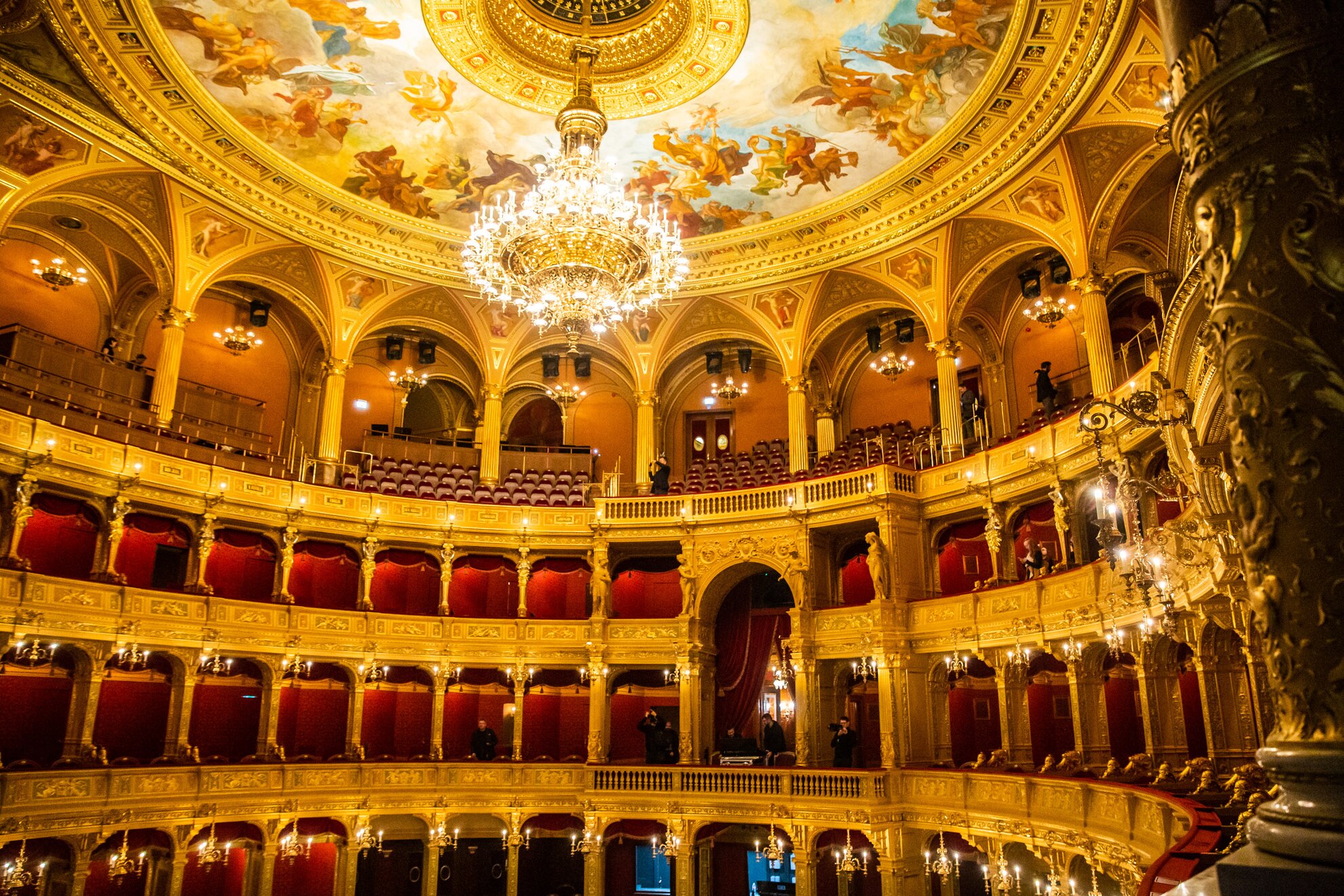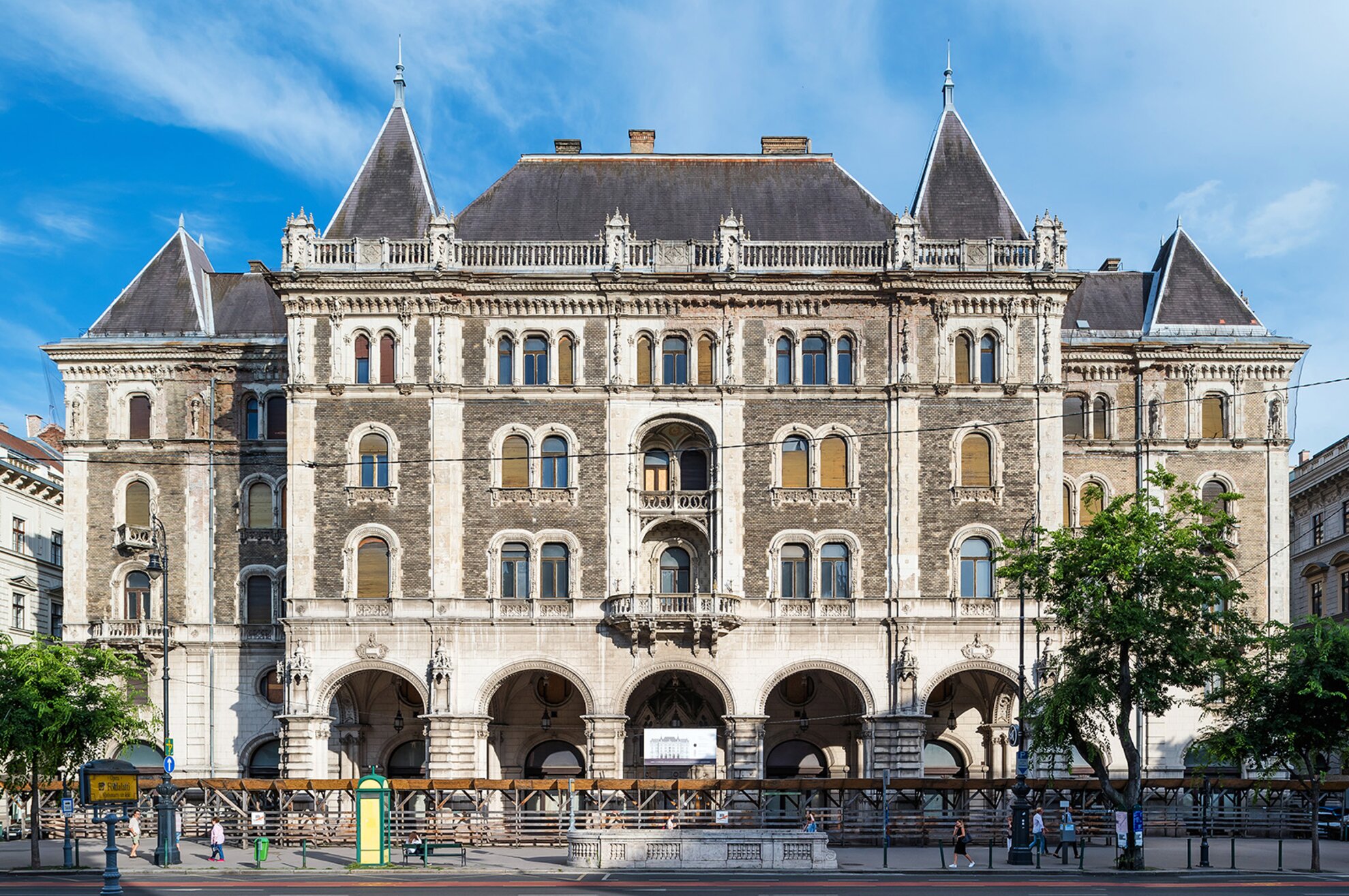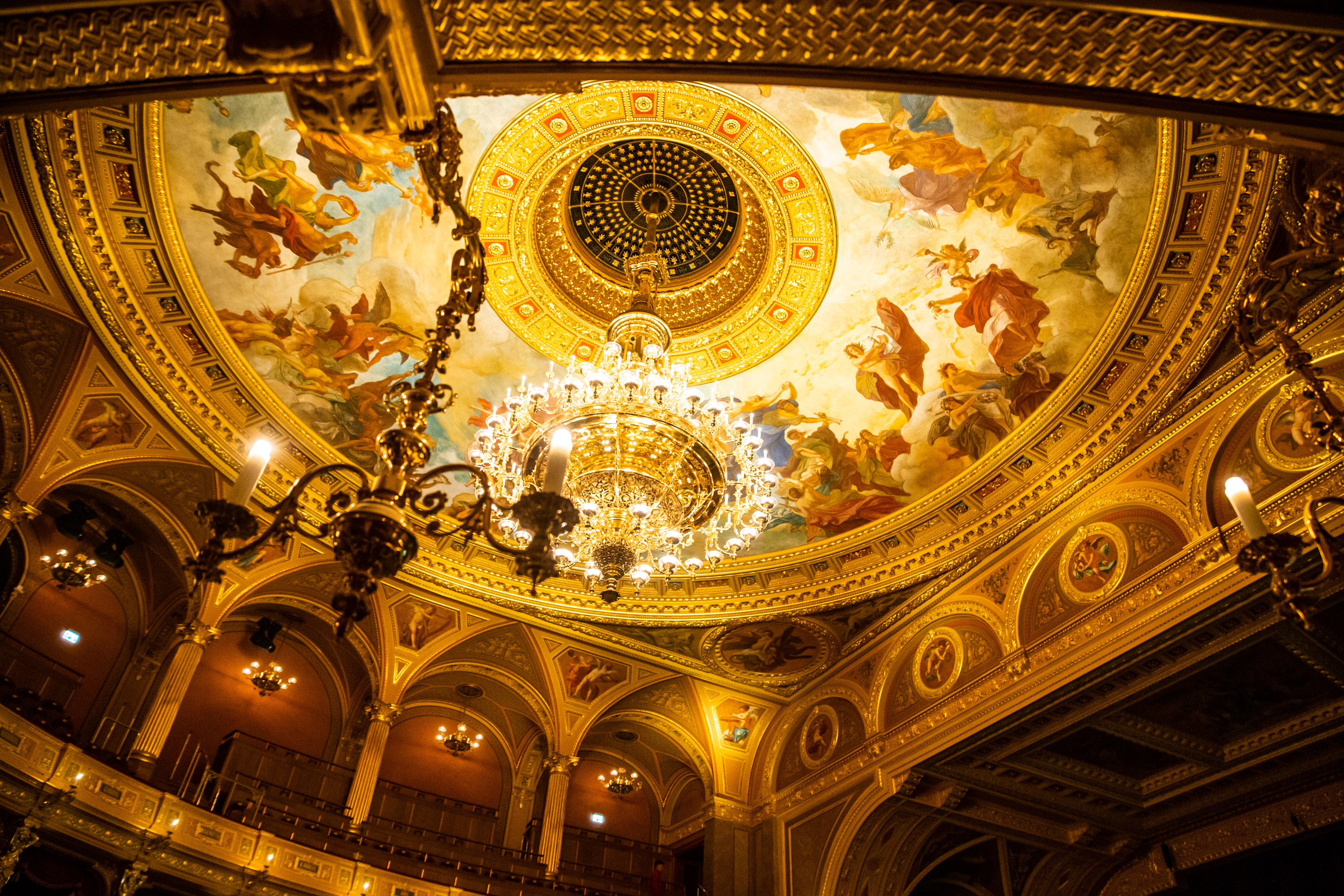The walk starts on the main staircase and our guide reveals that back when the Opera was built, these stairs were used only by aristocrats as social segregation was prevalent in the Austro-Hungarian Empire. The emperorand the lower social classes had their own separate entrances and corridors as well as bars.
As we head upstairs, we see the bust of Ferenc Erkel, composer of the Hungarian national anthem while behind us is a likeness of Miklós Ybl, designer of the gorgeous Opera building. The neo-Renaissance architectural style is supported by music-related paintings on the walls, while the ancient mosaics under our feet mimic the floor of the Ancient Roman city of Aquincum, that once flourished on today's Buda side.



Next, we arrive at the main bar, which has a vintage look, a perfect example of the recent faithful renovation. The guide says the organising principle for the refurbishment was resetting the original, first form of the Opera.
She goes on to explain that the construction of the majestic building was planned to be ready in three years starting from 1875, but in fact they completed it in nine, so its doors opened in 1884. The emperor at the time, Franz Joseph, generously donated a great sum of money,although on one condition – that the Hungarian Opera wouldn’t be nicer than its counterpart in Vienna.


We also learn that the theatre is built from mostly Hungarian materials except for the marble which came from Italy. As we move along, a dark, shady corridor follows, made from noble oak, with beautiful curtains on the walls.
This is called the smoking corridor as this was the area for men to indulge in tobacco. Due to its dark and somewhat spooky nature, it was also rumoured that it provided the perfect spot for young lovers to meet in secret, so it’s also known as The Corridor of Lovers.


Leaving the smoky passageway, a robust balcony provides an elegant view of today’s buzzing Andrássy út. Our guide shares that at the time when the Opera was built, it was a rather poor street with no fancy buildings. However, nowadays, it’s made its way to the repertoire of UNESCO World Heritage sites.
The Opera building is sometimes referred to as the Ybl Palace named after its architect, Miklós Ybl. Right across, we can see the Drechsler Palace which used to host the Hungarian National Ballet Institute, but now it’s being converted into a hotel.

Next, our tour leads to the so-called Red Parlour. This beautifully sophisticated room was exclusively reserved for the emperor and empress, and provided an entrance to the King’s Box.
The noble oak walls are decorated with the wood carvings of renowned artists, the Neuschloss brothers. Urban legend also says that the reason Franz Joseph visited the Opera only once was that upon entering the Red Parlour and the King’s Box, he became angry that the Hungarian theatre had turned out to be nicer than the Viennese one. Who knows…?! What we do know is that he only cameonce.


Passing through the building, The Royal Staircase leads past a giant mirror which allowed royals to check out their outfits and practise the correct walking posture. If you faced the mirror and your body was straight, you got it right, reveals our guide. Here the original handbill of the first opening show from 1884 is also displayed.


The tour finishes in the tremendous Auditorium, where superb acoustics are ensured by the modern ventilation system under our feet. Our guide reveals that in the 19th century, every performance had to be in Hungarian in the Opera – even foreign performers had to sing translated pieces.
As we wander around and take a seat in one of the boxes, we can see the brand-new surtitle machines in the separate boxes operating in four languages: English, German, Russian and French. Our journey may end here but the Opera House awaits with open bars and a new season to enjoy a show and marvel at its gorgeous interior.





